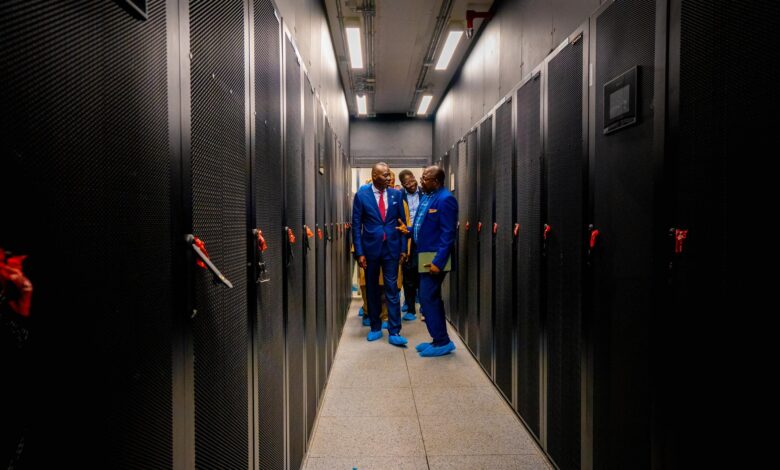Surging Global Data Centre Power Consumption Highlights Africa’s Digital Infrastructure Gap

The digital revolution is reshaping energy demand worldwide. In the U.S., data centres account for a substantial 8.9% of total electricity usage, with an installed capacity of 53.7 GW, making it the global leader by a wide margin.
Meanwhile, in the UK, 5.1% of national power consumption stems from data centres, driven in part by billions in foreign investment.
These figures underscore a fast-growing demand for reliable, substantial energy supplies—something that much of Africa is only beginning to address.
Africa’s Current Position
Modest Footprint: Africa contributes less than 1% of global data centre capacity, according to the Africa Data Centres Association (ADCA).
Capacity Today: The continent currently operates approximately 307 MW of data centre capacity—under 2% of what’s globally available—but ADCA estimates the need will soar to 1,000–1,200 MW by 2030 to meet demand. ([turn0search1], [turn0search9], [turn0search3], [turn0search18])
Market Growth and Investment Dynamics
Market Value Expansion: Africa’s data centre power market is projected to grow from USD 0.57 billion in 2025 to USD 1.07 billion by 2030, a compound annual growth rate (CAGR) of 13.4%.
Digital Infrastructure Investment: The World Bank’s IFC recently poured USD 100 million into the Raxio Group to build centres across Ethiopia, Uganda, Angola, Ivory Coast, DRC, and Mozambique—aiming to close local hosting gaps and boost digital sovereignty.
Energy Constraints and Sustainable Opportunities
Power Challenges: Frequent outages, high electricity costs, and outdated grids remain major hurdles in many African nations. Reliable energy access is crucial for sustained data centre growth.
Renewable Push: Steps are being taken toward green energy integration. In South Africa, Africa Data Centres has begun constructing a 12 MW solar farm, set to supply its facilities in Cape Town and Johannesburg.
Technology and Policy Support: Efficient cooling, modular designs, and open regulatory frameworks—including free-trade zones and renewable “wheeling provisions”—can help accelerate data centre deployment across the continent.
Data Centers Are Booming Globally
Luza Studios | E+ | Getty Images
In Virginia, data centers account for 26% of the state’s total power consumption—or nearly triple the national average.
By comparison, data centers comprise 4.8% of the total power share in the European Union and 2.3% in China.
As big tech ramps up AI spending, a significant share is being funnelled into massive data centers along with the energy sources that power them.
In particular, demand for nuclear is expanding at the fastest rate in decades.
Nigeria’s Data Centre Growth vs Power Challenges

Nigeria’s data centre capacity stands at 136.7 MW in 2025 and is projected to nearly double to 279.4 MW by 2030, driven by firms like Equinix, Rack Centre, MTN, Airtel (Nxtra), and OADC.
But growth faces major hurdles:
Unreliable grid (only 3,000–4,000 MW nationwide) forces centres onto costly diesel generators.
Energy costs take up 35%+ of operating expenses, with diesel over ₦500/kWh.
Frequent blackouts raise risks of downtime.
Despite these challenges, Nigeria’s data centre power market (USD 100m) is expected to grow to USD 260.9m by 2030. Renewable energy targets exist, but adoption is slow.





